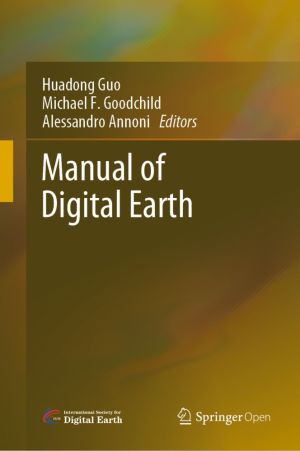Geographic Citizen Science Design
No one left behind
by Artemis Skarlatidou, Muki Haklay
DescriptionTable of ContentsDetailsHashtagsReport an issue
Geographic Citizen Science Design takes an anthropological and Human-Computer Interaction (HCI) stance to provide the theoretical and methodological foundations to support the design, development and evaluation of citizen science projects and their user-friendly applications. Through a careful selection of case studies in the urban and non-urban contexts of the Global North and South, the chapters provide insights into the design and interaction barriers, as well as on the lessons learned from the engagement of a diverse set of participants; for example, literate and non-literate people with a range of technical skills, and with different cultural backgrounds.
Looking at the field through the lenses of specific case studies, the book captures the current state of the art in research and development of geographic citizen science and provides critical insight to inform technological innovation and future research in this area. 






Book Description
Little did Isaac Newton, Charles Darwin and other 'gentlemen scientists' know, when they were making their scientific discoveries, that some centuries later they would inspire a new field of scientific practice and innovation, called citizen science. The current growth and availability of citizen science projects and relevant applications to support citizen involvement is massive; every citizen has an opportunity to become a scientist and contribute to a scientific discipline, without having any professional qualifications. With geographic interfaces being the common approach to support collection, analysis and dissemination of data contributed by participants, 'geographic citizen science' is being approached from different angles.Geographic Citizen Science Design takes an anthropological and Human-Computer Interaction (HCI) stance to provide the theoretical and methodological foundations to support the design, development and evaluation of citizen science projects and their user-friendly applications. Through a careful selection of case studies in the urban and non-urban contexts of the Global North and South, the chapters provide insights into the design and interaction barriers, as well as on the lessons learned from the engagement of a diverse set of participants; for example, literate and non-literate people with a range of technical skills, and with different cultural backgrounds.
Looking at the field through the lenses of specific case studies, the book captures the current state of the art in research and development of geographic citizen science and provides critical insight to inform technological innovation and future research in this area.
This open book is licensed under a Creative Commons License (CC BY). You can download Geographic Citizen Science Design ebook for free in PDF format (48.2 MB).
Table of Contents
PART I
Theoretical and methodological principles
Chapter 1
Geographic citizen science: an overview
Chapter 2
Design and development of geographic citizen science: technological perspectives and considerations
Chapter 3
Design approaches and human-computer interaction methods to support user involvement in citizen science
Chapter 4
Methods in anthropology to support the design and implementation of geographic citizen science
PART II
Interacting with geographic citizen science in the Global North
Chapter 5
Geographic expertise and citizen science: planning and co-design implications
Chapter 6
Citizen science mobile apps for soundscape research and public spaces studies: lessons from the Hush City project
Chapter 7
Using mixed methods to enhance user experience: developing Global Forest Watch
Chapter 8
Path of least resistance: using geo-games and crowdsourced data to map cycling frictions
Chapter 9
Geographic citizen science in citizen-government communication and collaboration: lessons learned from the ImproveMyCity application
PART III
Geographic citizen science with indigenous communities
Chapter 10
Developing a referrals management tool with First Nations in northern Canada: an iterative programming approach
Chapter 11
Lessons from recording Traditional Ecological Knowledge in the Congo Basin
Chapter 12
Co-designing extreme citizen science projects in Cameroon: biodiversity conservation led by local values and indigenous knowledge
Chapter 13
Community monitoring of illegal logging and forest resources using smartphones and the Prey Lang application in Cambodia
Chapter 14
Representing a fish for fishers: geographic citizen science in the Pantanal wetland, Brazil
Chapter 15
Digital technology in the jungle: a case study from the Brazilian Amazon
Chapter 16
Community mapping as a means and an end: how mapping helped Peruvian students to explore gender equality
Book Details
Title
Geographic Citizen Science Design
Publisher
UCL Press
Published
2021
Pages
402
Edition
1
Language
English
ISBN13
9781787356146
ISBN10
1787356140
ISBN13 Digital
9781787356122
ISBN10 Digital
1787356124
PDF Size
48.2 MB
License

Related Books

This open book discusses how the involvement of citizens into scientific endeavors is expected to contribute to solve the big challenges of our time, such as climate change and the loss of biodiversity, growing inequalities within and between societies, and the sustainability turn. The field of citizen science has been growing in recent decades. Ma...

This open access book offers a summary of the development of Digital Earth over the past twenty years. By reviewing the initial vision of Digital Earth, the evolution of that vision, the relevant key technologies, and the role of Digital Earth in helping people respond to global challenges, this publication reveals how and why Digital Earth is beco...

This engaging and clearly written textbook/reference provides a must-have introduction to the rapidly emerging interdisciplinary field of data science. It focuses on the principles fundamental to becoming a good data scientist and the key skills needed to build systems for collecting, analyzing, and interpreting data. The Data Science Design Manual...

Anyone can be a scientist, and this issue we'll show you how. Whether you're interested in space, traffic, the oceans, or something else, there's a citizen science project for you. The world has never been more connected - so let's use that connectivity to make our planet better!
- We talk to a real-like scientist about the e...

Over the past decades, rapid developments in digital and sensing technologies, such as the Cloud, Web and Internet of Things, have dramatically changed the way we live and work. The digital transformation is revolutionizing our ability to monitor our planet and transforming the way we access, process and exploit Earth Observation data from satell...

This book summarizes peer-reviewed articles and the abstracts of oral and poster presentations given during the YOUMARES 9 conference which took place in Oldenburg, Germany, in September 2018. The aims of this book are to summarize state-of-the-art knowledge in marine sciences and to inspire scientists of all career stages in the development of fur...

